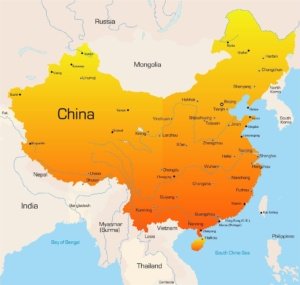
Introduction: The Entity China
The area of China is approximately 9.6 million square kilometers (3.7 million square miles) with a population of approximately 1.6 billion people. This means that 6.5 percent of the total world land area is occupied by 23 percent of the world human population. Out of this situation, the Chinese people have fashioned a civilisation and a culture which dates back to four thousand years.
The major language spoken is Mandarin. Cantonese is spoken mainly in the southern coast of China and in Hong Kong. Buddhism, Christianity, Islam and Taoism are the main religions of China.
1. Overall Assessment of China The most populous country in the world with a population of 1.6 billion people, the People’s Republic of China (PRC) possesses the fastest growing economy in the world, and is fast becoming a major multi-dimensional power in international affairs.
2. A Brief History of the People’s Republic of China (PRC) What is today called the People’s Republic of China emerged out of a unique set of historical circumstances. China and its civilization, which has been continuous for more than four thousand years, dominated the world until the nineteenth century. Inventions such as gun powder, paper are all uniquely Chinese. The People’s Republic of China was established on the 1st October, 1949 after the communist party had defeated Chiang Kai-Shek and the Japanese had been driven out of Asia at the end of the Second World War. Throughout the fifties and the sixties the communist party engaged in sever- al experiments, aimed at modernizing China. After the death of MaoTse Tung, Chinese leaders, including Deng Xiao Ping, decided to put China firmly on the road to modernization. As a result of major economic reforms under the rubric of “reform and opening up” China experienced unprecedented economic growth to the tune of 10% for approximately four decades. In the process China be- came the second largest economy in the world.
3. The Communist Party of China (CPC) The Communist Party of China has dominated the political, economic and social life of China since the establishment of the People’s Republic of China on the 1st October 1949. It was founded on July 1, 1921 in Shanghai. The Communist Party of China (CPC) is the largest political party in the world.
Organisation
The Party’s highest decision making body is the National People’s Congress, which meets at least once every five years. The most important organs of the Communist Party are the following:
- The Politburo of the Standing Committee now consists of seven (7) members and is chaired by the General Secretary of the Communist Party of China (CPC). The names of the members of the Politburo of the Standing Committee will be found at Appendix.
- The Politburo which consists of twenty-two (22) full members. The names of the members of the Politburo are at Appendix 2.
Central Military Commission – The Central Military Commission is the highest state military organ with the responsibility of commanding the armed forces of the People’s Republic of China. It is chaired by Xi Jinping, who is the General Secretary of the Central Committee and President of China.
Major Organisations under the Central Committee:
- International Liaison Department.
- United Front Work Department.
- Organization Department.
- Propaganda Department.
- Party Central Academy.
4. The Chinese People’s Political Consultative Con- ference (CPPCC) It is often forgotten that apart from the Communist Party there is another political organisation which forms part of the body politic of China. This is the CPPCC which was established in 1954.
5. The State Council of the People’s Republic of China The State Council of the People’s Republic of China is the chief civilian administration of the People’s Republic of Chi- na. It is chaired by the Premier of China and consists of the Heads of each Government department and agency. There are about fifty (50) members of the State Council.